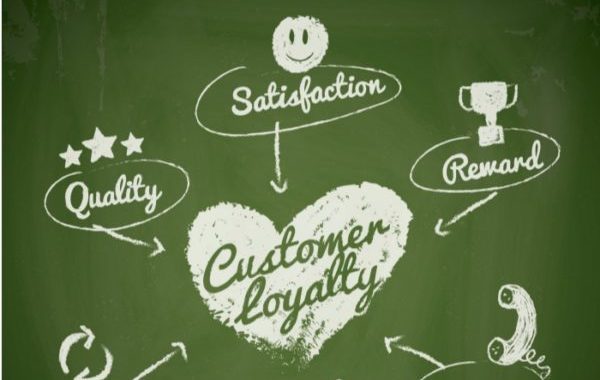
How to Measure Customer Churn and Prevent It
Convincing a customer to purchase or sign up for your product is one thing, but making them stay loyal and continually use or depend on it is another. This is why customer retention requires a strategy that will make customers see the overall value and stick.
Customers stop using certain products or services for multiple reasons. It can be budget constraints, better deals, or switching to a competitor that causes loss and adds to your customer churn rate.
As per Market Metrics, the probability of making a sale or upselling to an existing customer is 60-70%, while the same for a new prospect is around just 5-20%.
Therefore CRO (conversion rate optimization) is important. It can increase your profits and decrease churn for long-term success. Reducing your customer churn rate is far more profitable than hunting for new customers who will engage with your product.
What is Churn Rate?
Simply put, it is a measure of the number of customers/clients who stop buying from your brand. Churn rate is the rate at which customers stop using the products or services of the company.
How to Calculate Customer Churn Rate
While the notions for measuring churn rate differ based on type, nature, offerings, and more, it can be deduced to a simple formula.
Subtract the number of users at the end of a certain period from the number at the beginning. That should be divided by the users at the beginning or start of the period.
This period can be month, year, or even a quarter. When calculating, you need to make sure it’s consistent so that there is accuracy in the representations.
When Does Churn Happen?
To define the moment of churn, there are various points to consider:
- The moment of cancellation of subscription
- The moment the customer does not renew the contract
- The moment they do not inquire about the renewal process
Why is Churn Rate Important?
Customer churn rate is a direct reflection of how satisfied customers are with your products and services. When subscribers or customers leave, you lose on revenue, branding, and opportunities of expansion.
Churn rate needs to be measured carefully as it:
- Provides insights on long-term health
- Reflects customer retention patterns
- Identifies improvement areas
- Determines product success
Churn Rate for SaaS Business
Losing customers and subscribers is bad, but for SaaS companies, the metrics negatively impact the business in the long run.
Customer lifetime value (CLV): CLV is the profit one can expect due to a relationship with a customer for the lifetime of that relationship. It is equated to the profits that the company will make after covering the acquisition costs. This will be heavily impacted due to customer churn.
Customer acquisition cost (CAC): CAC is the cost the company undertakes while acquiring a new customer. If the customer leaves before the contribution of enough revenue, the business will lose that investment.
Monthly recurring revenue: The revenue a business can expect on a monthly basis greatly impacts other investments.
9 Actionable Ways to Reduce Customer Churn
Now that the concept of customer churn is clear, it’s important to reduce it. Here are some actionable ways you can reduce customer churn.
1. Re-Tune Your Digital Strategy
Stay in touch with your customers digitally and make sure you have multiple touchpoints to increase value. Segment your customers and offer them unique solutions, create innovative campaigns, and increase the frequency of engagement to stay on top of mind.
2. Be Proactive
Be lean and agile to make sure your product is a ‘must-have’ or ‘need-to-have’ one. Offer value to your customers by proactively reaching out with solutions and experiences. Provide free access to some key aspects or features, reduce contract and renewal fees, and offer flexible payment options to encourage your customers to stay.
3. Collaborate
Teamwork is the key to effectively identify customer needs and customize solutions based on that. Product, finance, support, marketing, and sales teams should identify the problem areas where you can work to better engage customers. Cross-team collaboration is important to keep the customer.
4. Keep Them Happy
Keeping a customer happy is like giving them an award. Something innovative can show you are of value to them. It improves goodwill, promotes interest, and is an amazing customer engagement strategy.
5. Share Best Practices
Be generous with your best practices, wisdom, and strategies. Share them with others so that they can grow as well. Remember, the best sale comes of value. You are only as successful as your customers.
6. Communicate
Reach out to customers and build a positive, mutually-beneficial relationship. For them, you are an advisor who should help them with solutions. If they remain in the dark about the solutions you offer, they will not be able to gauge the impact of support. So, create educational content designed to make them trust, understand, and believe you better.
7. Be Timely
Create timely communications for each stage in the customer lifecycle. Create customized content designed to make them stay. Understand their concerns and use success stories or case studies to help them discover more about your product or service.
8. Know That Some Churn is Fine
While churn is bad for business, it’s best to let some customers go. While you should focus on retaining customers, it’s important to know that you can let them walk away. Loyal customers who are advocates of your brand are more likely to spread goodwill than the ones who are looking to churn always.
9. Take Feedback Lessons
If someone churns, it’s important to gather insights on why they left your business. Use that data to analyze your sales process and conversion strategies. Learn from them and make the customer retention strategy better.
Final Thoughts
Offering your customers a valued experience is a collaborative effort involving all teams. It is important to keep that strategy alive to make your SaaS company a force to reckon with. If you are efficient, proactive, and work to provide value to your customers, they are more likely to stick around. The words are simple: Make it matter.
| Jafar Sadhik is a content specialist working in the digital marketing field for the past 4 years. Currently, he works at SmartKarrot Inc., a customer success software platform, and is keen to learn about different SaaS technologies that are coming out each day. He also loves to read Agatha Christie’s novels. |



